When we first saw the Intel Optane DC P4801X at the New Intel Data Center Optane m.2 at OCP Summit 2018, we were excited. There are many servers that have M.2 slots perfect for cache devices. For example, if one has a 3.5″ storage server, and needs a caching drive, M.2 is a great way to get that. In 2019, a 100GB NVMe SSD is small. Make that very small. It is, however, perfect for a log drive. Since at STH we test ZFS ZIL/ SLOG devices, we saw the DC P4801X and think that it is a great fit for that role.
Intel Optane DC P4801X Review 100GB M.2 Overview
The SSD itself is a standard M.2 “gum stick” form factor. Technically it is a M.2 22110 or 110mm form factor. Many servers only have M.2 2280 (80mm) slots, and these will not fit. Be aware of this when configuring your systems. Another important fact: it has double sided components. This is important for cooling however in servers and storage nodes, the M.2 slots are generally designed for this with their airflow layouts.

One can see the bottom of the drive here:

We wanted to do a quick comparison of the Intel Optane DC P4801X M.2 with the Intel Optane 905P 380GB M.2 NVMe SSD we reviewed. That is a very logical competitor for some applications. Although not planned for this review, we found the two drives sitting next to one another in a photo we took.
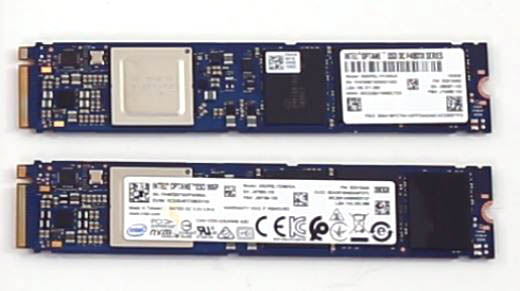
As you can see, the drives look very similar. The Intel Optane DC P4801X is actually less expensive. One pays an additional ~80% for the Intel Optane 905P 380GB drive but gets 3.8x the storage. Clearly, if you want capacity the Intel Optane DC P4801X 100GB M.2 is not the option we recommend.
Intel Optane DC P4801X Review 100GB M.2 ZFS ZIL/SLOG Performance
Here we are again using the FreeBSD diskinfo tool to simulate the type of activity patterns one sees with ZFS ZIL/ SLOG devices. Although the industry likes to quote 4K random write numbers, that is not the most relevant. A 100GB drive written continuously at 100% load will fill up quickly. Instead, logging operations often perform some writes, then need to flush data to make room for the next set of data. Here is the raw result for the Intel Optane DC P4801X 100GB M.2 drive:
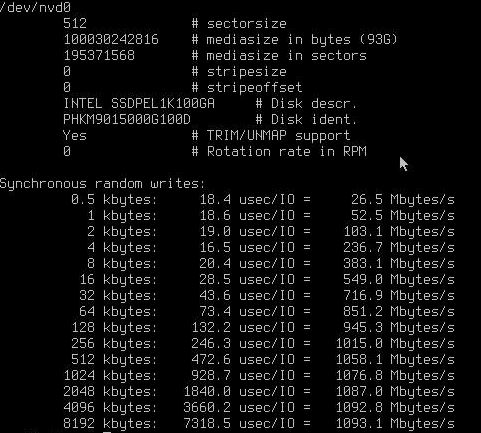
This is great performance up to almost 1.1GB/s. Intel rates the drives conservatively at 1GB/s read performance, but this is notably better. It is still far from what a PCIe 3.0 x4 channel can deliver so one is not making effective use of all PCIe bandwidth available.
Putting that into some context for our readers, here is a comparison to a few other options we have tested:
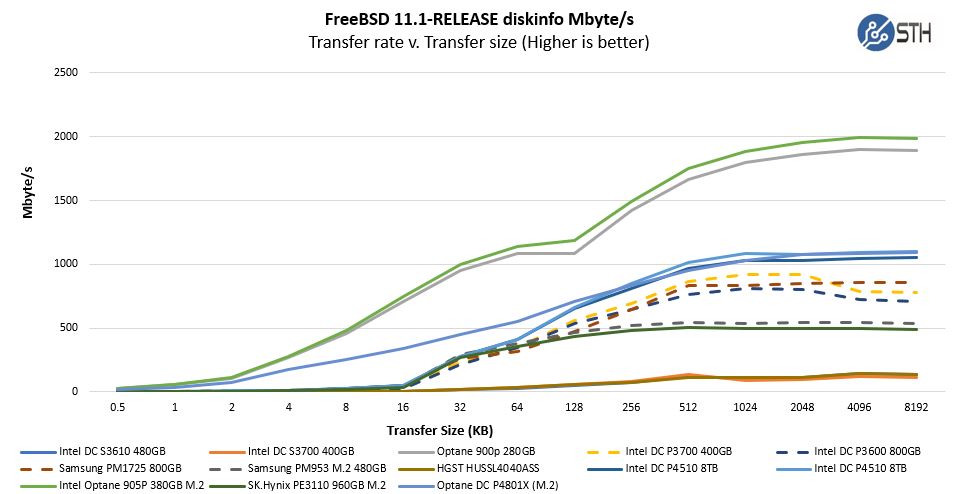
As you can see, the drive performs very well at lower transfer sizes, but the throughput tops out well before other high-end Intel Optane SSD solutions. Throughput is nice, but often we want to see latency.
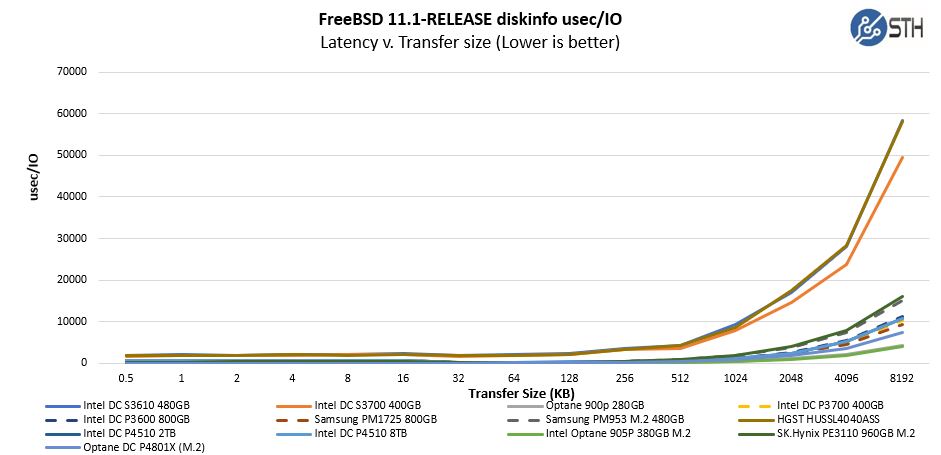
With the Intel Optane DC P4801X, as with other Intel Optane drives, it is very hard to see the results on this chart. We can zoom into the lower transfer sizes to get a better view.
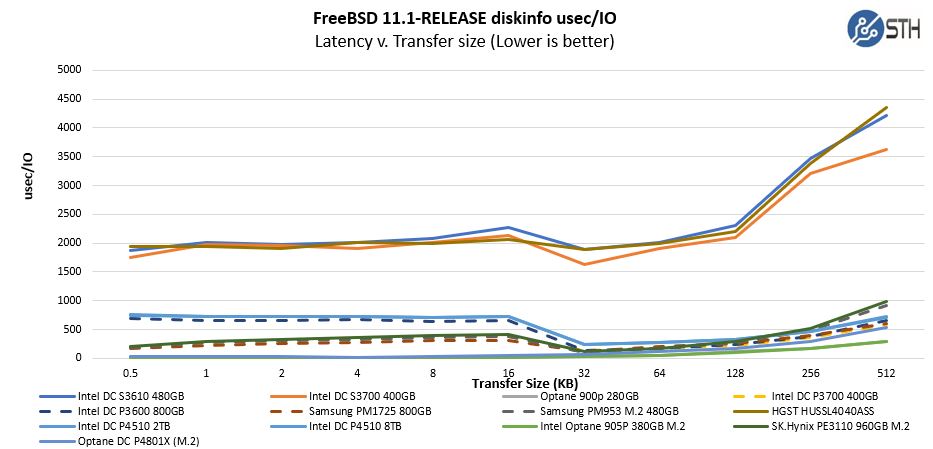
Here, the Intel Optane DC P4801X 100GB M.2 drive performs like its larger Optane alternatives and hugs the X-axis line at small transfer sizes. This is exactly what one wants with a ZFS ZIL/ SLOG device.
One can see the great performance at small file sizes. On the other hand, the Intel Optane DC P4801X is not fast enough to fully saturate higher-speed networking options found in servers. 10GbE is not an issue at these speeds, but this is not the answer for log devices that are expected to keep up at 40GbE/ 50GbE speeds.
Final Words
The Intel Optane DC P4801X 100GB M.2 NVMe SSD is solid for what it presents. Let us remember, this device sells for under $270. Write endurance is rated at 10.9PBW which is more than most storage systems will see, especially those that are using $270 log devices. If you have a 10GbE class ZFS node or even a Ceph node and adding a write log device in front of a disk is important, then this is a great low-cost option. If one is doing a small Ceph deployment using smaller nodes, we see this as being an inexpensive way to get a high-performance log device to many small nodes.
There is another aspect of the Intel Optane DC P4801X 100GB M.2 NVMe SSD that we wanted to highlight. If you are building commercial solutions, this drive comes with features like a 2M hour MTBF and end-to-end data protection. If you use an Intel Optane 905P drive in your product, and the device fails, a customer may question your choice of a prosumer drive. With the P4801X, this is Intel’s supported data center solution. Alternatively, there is also a U.2 version you can read about in our Intel Optane DC P4801X 100GB U.2 Review.
Let us be clear, for any use other than as a write log device, we cannot recommend the Intel Optane DC P4801X 100GB M.2 device. At $2.60 per GB it is too expensive when solid performing NVMe SSDs are approaching $0.10 per GB today. If you do not need a dedicated heavy write-log device, get something else.

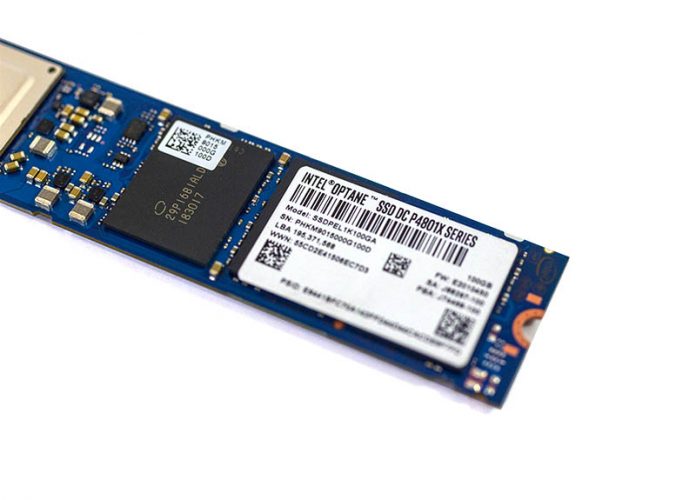


Where does Intel themselves market this drive? What do they think is the use case? Also, it would be great to see some disk results from an actual ZFS array before and after installation of this drive.
I could also see this as a write cache for a NAS.
Given that there are 17 drives references in the graphs, it is nary impossible to pick out the P4801X. You should consider revising the graphs to use a highlight color for the featured drive.
Jeremy this is what they’re talking about as a SLOG device.
Appreciate the article and graphs, but I agree with Blinky that the graphs are tough to read. When lots of curves are shades of blues and greens, it’s just hard to read.
Highly suggest contrasting colors for the drive you’re trying to highlight. A bright red color for the optane drives would have made all the difference.
Great feedback. We have the U.2 version of this as well. I will re-make the charts with that one and see if we can get something easier to read.
The Optane P4801X is additionally hard because they often track the X-axis.
Is the write performance for durable writes (with fsync)?
They’re using a sync write test
Typo…
Clearly, if you want capacity the Intel Optane DC P4801X 10)GB M.2 is not the option we recommend.
Should be 100GB not 10)GB
I wonder why up to a transfer size of 512KB, the raw results of the transfer rate are much higher than the data in the plot. Given the numbers from the raw results, the gap to the higher capacity Optane disks is much narrower which makes the 100GB device even more interesting up to 10GbE.
Is there Powerloss Protection for the DC P4801X?
Powerloss Protection is not applicable to Optane drives. The 3D Xpoint is so fast at writing, that it doesn’t use a DRAM write cache like regular flash drives. Instead, writes are committed directly to non-volatile storage.